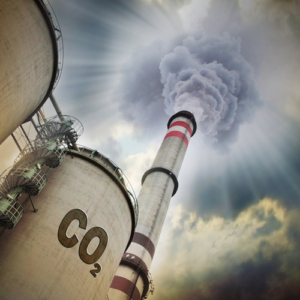The Reality of Canada’s Climate Goals: Are Net Zero Emissions Even Possible?

At Extreme Investor Network, we understand the complexity of climate economics. With politicians like Justin Trudeau frequently asserting that Canada is on pace to achieve net zero emissions by 2050, it’s crucial to dive deeper into the practicality—and the potential costs—of these ambitious claims.
The Challenge Ahead
Many experts are questioning the feasibility of these goals. A study by the Fraser Institute highlights alarming projections: Canadians could face an annual cost of C$8,000 per person by 2050 to pursue these ambitious climate targets. This staggering figure isn’t just about financial sacrifices; it’s about real economic sacrifice, too. The report estimates that the climate agenda could shrink Canada’s GDP by 7% and push worker income down by 6%, leading to a job loss of approximately 250,000 positions.
The Carbon Tax Conundrum
The concept of a carbon tax is at the heart of many climate policies. The Fraser Institute’s analyses illuminate a troubling truth. Imposing a C$400 per tonne fee on corporations could result in a 68% decline in emissions; however, raising this tax to C$1,200 would only yield a marginal additional decline of 6%. The implications of such taxation could send Canada’s GDP tumbling by 18%, with incomes potentially dropping by an alarming 17%.
Infrastructure: A Massive Hurdle
Kenneth Green, in his pivotal work titled “Rapid Decarbonization of Electricity and Future Supply Constraints,” emphasizes a critical issue: Canada lacks the infrastructure to realize these low-carbon ambitions. According to Green, the nation would require a staggering 684 Terawatt-hours (TWh) of electricity by 2050, necessitating the construction of around 16 new nuclear power plants—projects that he estimates would take up to 112 years to complete.
Moreover, alternative energy sources like wind and solar are hardly panaceas. If Canada were to rely on wind power, approximately 575 new installations would need to be constructed, requiring around 1,150 years of development and a million hectares of land. And solar energy? A daunting 840 generating stations would need to be built, with a mind-boggling completion timeline of 1,680 years. Green’s calculations didn’t even include the extensive regulations and legalities that accompany these massive projects.
The Bigger Picture: "Emissions Impossible"
Critics of current climate accords, including the Paris Agreement, have coined the term “emissions impossible” to describe the daunting challenge of completely eliminating carbon emissions. Governments may still call for these unrealistic commitments, but there is a growing realization that such measures could lead to economic catastrophe rather than environmental salvation.
Conclusion: A Call for Viable Solutions
At Extreme Investor Network, we believe in the importance of addressing climate change. However, we advocate for thoughtful and economically viable solutions instead of grand governmental promises anchored in unachievable ideals. It’s essential for citizens to understand the potentially grave economic impacts of lofty environmental goals and demand clarity, transparency, and practicality from their leaders.
We welcome you to join the conversation about the future of Canada’s economy and its environmental trajectory. Your insights and engagement can help guide a more realistic dialogue about sustainability, investment opportunities, and the balance between economic growth and environmental stewardship. Let’s work together toward sensible solutions that can genuinely make a difference.

